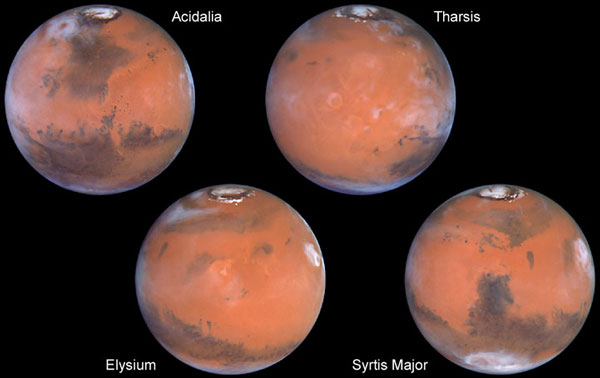
|
Explanation: As Mars rotates, most of its surface becomes visible. During Earth's recent pass between Mars and the Sun, the Hubble Space Telescope was able to capture the most detailed time-lapse pictures ever from the Earth. Dark and light sand and gravel create an unusual blotted appearance for the red planet. Winds cause sand-tinted features on the Martian surface to shift over time. Visible in the above pictures are the north polar cap, made of water ice and dry ice, clouds including an unusual cyclone, and huge volcanoes leftover from ancient times. The Mars Global Surveyor satellite orbiting Mars continues to scan the surface for good places to land future robot explorers.
|
January February March April May June July August September October November December |
| ||||||||||||||||||||||||||||||||||||||||||||||||
NASA Web Site Statements, Warnings, and Disclaimers
NASA Official: Jay Norris. Specific rights apply.
A service of: LHEA at NASA / GSFC
& Michigan Tech. U.
Based on Astronomy Picture
Of the Day
Publications with keywords: Mars - surface - sand
Publications with words: Mars - surface - sand
See also:
- APOD: 2025 September 28 Á Leopard Spots on Martian Rocks
- APOD: 2025 July 15 Á Collapse in Hebes Chasma on Mars
- APOD: 2025 July 6 Á The Spiral North Pole of Mars
- APOD: 2025 June 29 Á Dark Sand Cascades on Mars
- APOD: 2025 June 22 Á A Berry Bowl of Martian Spherules
- APOD: 2025 June 15 Á Two Worlds One Sun
- Perseverance Selfie with Ingenuity
